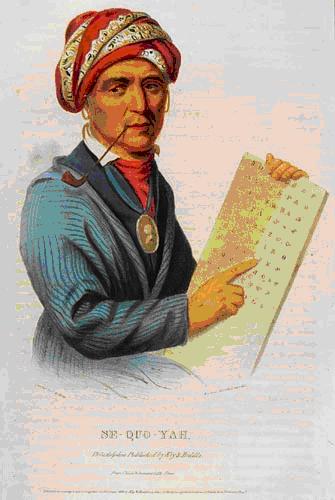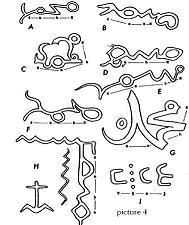The History of Muslims in America is the history of America’s roots. Historians have confirmed that during the golden days of the Muslim nation, Muslim ships were plying the Atlantic Ocean, which was then known as the Sea of Injustice, and they were heading west.
In the year 889, Muslim sailor Khishkhash ibn Said ibn Aswad Al-Qurtuby (of Cordoba) set sail from the port of Palos in Muslim Spain and reached a certain land in the west. He returned home with huge treasures. He drew a world map calling these areas in the Atlantic Ocean “the unknown land”. The Muslim geo-historian Al-Masoudy records this in his book “Muruj-al-Dhahab wa Maadin Aljawhar”(956 AD).
A Chinese Muslim Admiral Zeng is said to have discovered America before Columbus. A Chinese document known as the Sung Document (1178) records this voyage of Muslim sailors to a land known as Mu-Lan-pi (America).
150 years later in 1310 Abu Bakri (Abu Bakar), a Muslim king of the Malian Empire, spearheaded a series of sea voyages to the New World. [They Came Before Columbus (1976) by Ivan Van Sertima].
Two years later (1312) Mandinga, African Muslims, from Mali and other parts of West Africa arrived in the Gulf of Mexico for exploration of America’s interior using the Mississippi River as their access rout.[ African Presence In Early America by Ivan Van Sertima ].
Columbus sailed from Spain (formerly Muslim Andalusia) much later in 1442.In his days Spain was full of Muslims. He had Muslims Spaniards and Muslim Moors on his ships. Panzone Brothes who captained two of his ships was a Muslim. For the voyage he used Muslim Maps.
On his fourth voyage in 1502 he records two important discoveries:
•On July 31, 1502, off the island of Jamaica, Columbus encountered strange people on a strange ship that western historians have generally considered to be Mayan Indians. From a distance, Columbus thought it to be uncannily like the Moorish galleys he had so often seen in the Mediterranean. There were approximately forty men and women on this galley and unlike the Jamaican Indians, these people wore clothing with showy colors and designs like those Columbus had seen, in Muslim Granada. Columbus observed that the women aboard this galley “covered their faces like the women of Granada.” Were these people Muslims who had reached the New World before him? As we shall see next Columbus certainly considered the possibility.
•The Canaries, a Portuguese possession, was a favorite dumping ground used by the Spanish Inquisition for dumping ‘Conversos’ of Muslim Berber origin. On the Caribbean island of Guadeloupe, Columbus discovered an iron pot and an old ship’s mast which he determined could have their origin only in the Canary Islands.
Treaties between US government and the Cherokees Indians in 1787 signed on the Delaware River bear the signatures of Abdel-Khak and Muhammad Ibn Abdullah. This treaty details their continued right to exist as a community in the areas of commerce, maritime shipping, and continue their form of government which at that time was in accordance with Islam. The traditional dress code for Cherokee Red Indian women included the kimah and long dresses. For men, the standard fare was turbans and long tops that come down to the knees. If you read any of the old books on Cherokee clothing up until 1832, you will see the men wearing turbans and the women wearing long head coverings.

Cherokee oral traditions indicate that the Cherokee people had some form of written language, but its use progressively decayed in the period between sixteenth and eighteenth century due to their changing fortunes, and subsequent migration to the mountains in the southeast, and continued isolation of their people in various parts of the Americas. By the mid-eighteenth century, most Cherokee had lost all but the oral and phonetic parts of the language. Sequoyah,(shown above) the Cherokee Native-American leader of the nineteenth century, is best known for re- inventing the new Cherokee Syllabary in 1821. Remarkably Sequoyah’s system is similar to that used in teaching Arabic language! The discovery of 7th century native rock carvings at Nevada (shown below), suggests the original language may well have been Arabic as the carvings are stylized forms of the name Muhammad.

The last Cherokee’s chief was a Muslim Ramadhan Ibn Wati who served as a Confederate brigadier general, surrendered his command to the United States on June 23, 1865. See http://membres.lycos.fr/andalus/english/info/cherokee.htm. His son Saladin Watie served on Southern Cherokee delegation to Washington, D.C. to sign a new treaty with the United States at the end of Civil War.
Over 500 names of US towns and many Red Indian tribe names reveal their Muslim (Arabic) etymological ancestry. California (Caliph-Haronia); Alhambra, Palestine, Allahbumya (Alabama), T Allah hasse (Talahasee) -Allah, will deliver you sometime in the future! Then there is Mecca in Indiana, Medina in Idaho, Medina in New York, Medina and Hazen in North Dakota, Medina in Ohio, Medina in Tennessee, Medina in Texas, Medina and Arva in Ontario, Mahomet in Illinois and Mona in Utah, to mention a few of the noticeable names. A closer analysis of the names of native tribes also immediately reveals their Arabic etymological ancestry; Anasazi, Arawak, Arikana, Cherokee, Hohokam, Hupa, Makkah, are only a few examples.
Note: The data has been taken from too many inter-net sources to enable giving Credit. Just Goggle any name given in this article if you want confirmation.



